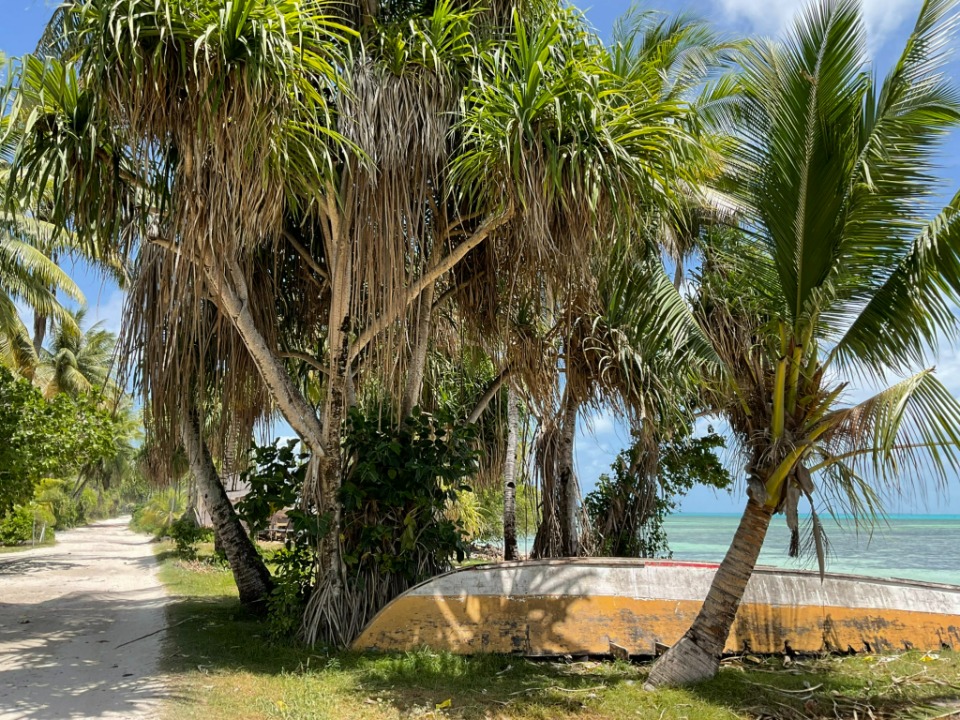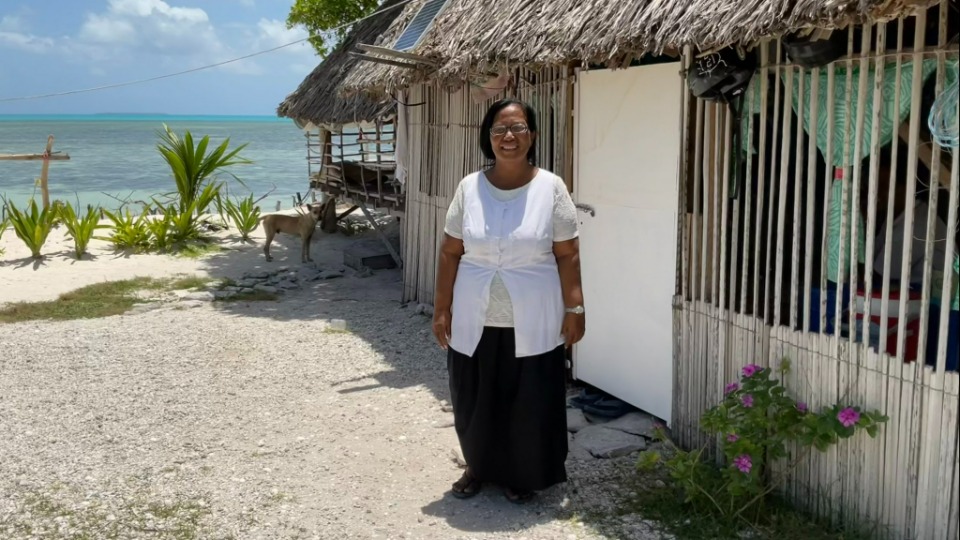“…Our interactions with the beauties of nature around us can produce some of the most inspiring and delightful experiences in life… These wonderful creations were prepared entirely for our benefit and are living proof of the love the Creator has for His children.” Presiding Bishop, Gerald Causse, October 2022 General Conference of The Church of Jesus Christ of Latter-day Saints

Kiribati House
The pandanus and coconut palm trees grow in abundance in Kiribati. Abiang Island, Kiribati, 2022© 2022 by Intellectual Reserve, Inc. All rights reserved.God’s love is wonderfully evident on Abiang Island, Kiribati, where coconut palms and pandanus trees grow in abundance. Not only do the trees provide food and drink for the inhabitants of the island, they are also used in the construction of homes and other structures.
Almost every part of the coconut tree is useful to the resourceful people of Kiribati. Coconut water is full of electrolytes and naturally hydrates better than water. The meat of the coconut is also nutritious, the husks can be dried to make rope, and the dried spines of the palm fronds are sturdy and can be tied together to create walls and floors. The palm leaves, with skill, can be woven into mats.
The pandanus tree is also serviceable. The fruit is sweet, the dried pandanus leaves can be bundled to make thatch and the branches and trunks can be used as poles in construction. Using very little else, a home of beautiful simplicity can be created with the pandanus and the coconut palm. Both trees are a gift to the people of Kiribati. As President Penisula Mwenwenikeaki of the Tarawa West Kiribati Stake noted, “God has given us everything that we need.”
The careful stewardship and industry of the Kiribati people shows their respect and gratitude for the blessing of these trees–no part of them is wasted.
| Temple Square is always beautiful in the springtime. Gardeners work to prepare the ground for General Conference. © 2012 Intellectual Reserve, Inc. All rights reserved. | 1 / 2 |
“We participate in the work of creation whenever we cultivate the earth or add our own constructions to this world–as long as we show respect for God’s creations,” Bishop Causse noted recently. The homes created on Abiang Island are indeed a collaboration with God.
Bishop Causse also taught in his conference address, “Our stewardship over God’s creations also includes, at its pinnacle, a sacred duty to love, respect and care for all human beings with whom we share the earth.” These eternal principles of stewardship came alive when members of the Tarawa West Kiribati Stake built a home for one of their members in need using the natural resources at hand.
Rebwa Tannang moved with her son to Abiang Island to teach at the Kiribati Uniting Church School. For several months they had to live with other teachers as there was no home for them. Rebwa wrote a letter to her stake president (local church leader) asking for his help. President Penisula Mwenwenikeaki and his fellow Church members happily stepped forward in their stewardship to care for one another to create a new home for Rebwa.

Kiribati house
Rebwa Tannang is delighted with her home on Abiang Island. Abiang Island, Kiribati, 2022© 2022 by Intellectual Reserve, Inc. All rights reserved.The men gathered and dried palm spines from their own properties. They cut down pandanus trees to make poles and railings. The women dried and rolled the fibres from the coconut husks on their thighs to create a strong rope. They also bundled pandanus leaves together to make a tight and waterproof thatch.
When they had gathered all that they needed, entire families came together on consecutive Saturdays to raise a house. The children played, the women cooked, and the men constructed a home for Rebwa and her son. The families participated in the creation of a new home for a friend in a joyful partnership with God, linking heaven and earth.